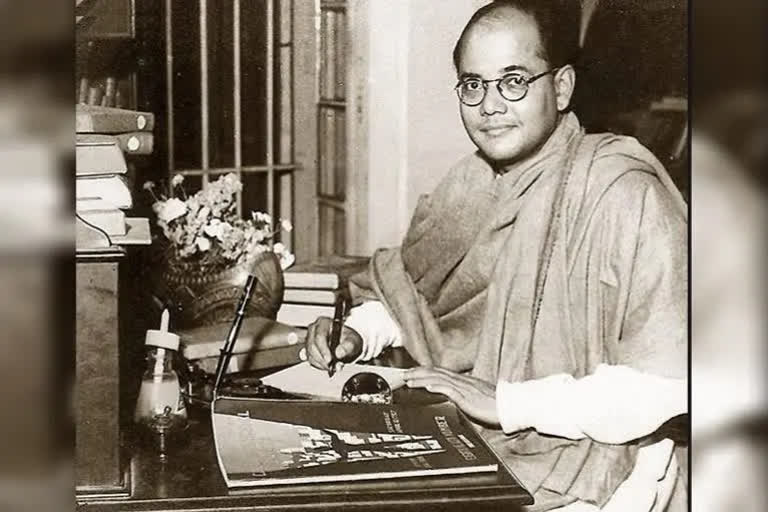New Delhi: Heroes never fade away. With time, they only burn bright. About 77 years after his much-discussed disappearance, ‘Netaji’ Subhash Chandra Bose continues to inspire and lead that nation in ways more than one. On Sunday, Netaji’s legacy will illuminate the nation’s history even more under the cold searchlight of truth and reason.
On Sunday, a hologram of the legendary patriot will beam up from the exact spot under a canopy at the iconic India Gate where a 70-feet tall statue of George V, the former king of England once sat. But the hologram will be a stop-gap arrangement until 28 feet by 6 feet granite statue of Netaji is installed at the very spot. King George’s statue was removed in 1968.
On Friday, Prime Minister Narendra Modi tweeted: “At a time when the entire nation is marking the 125th birth anniversary of Netaji Subhas Chandra Bose, I am glad to share that his grand statue, made of granite, will be installed at India Gate. This would be a symbol of India's indebtedness to him.”
“Till the grand statue of Netaji Bose is completed, a hologram statue of his would be present at the same place. I will unveil the hologram statue on 23 January, Netaji's birth anniversary.” The India Gate, part of the work of the Imperial War Graves Commission (IWGC), was built as a memorial to soldiers of British India who were killed in the First World War.
Later on, after the 1971 War of Liberation for Bangladesh, the Indian government set up the ‘Amar Jawan Jyoti’ or the 'Eternal Flame’ to immortalise the memories of those soldiers who laid down their lives in 1971. As a result, there were no memorials at the India Gate for soldiers who had fallen after the 1971 war, resulting in a ‘historical anomaly’ of sorts.
